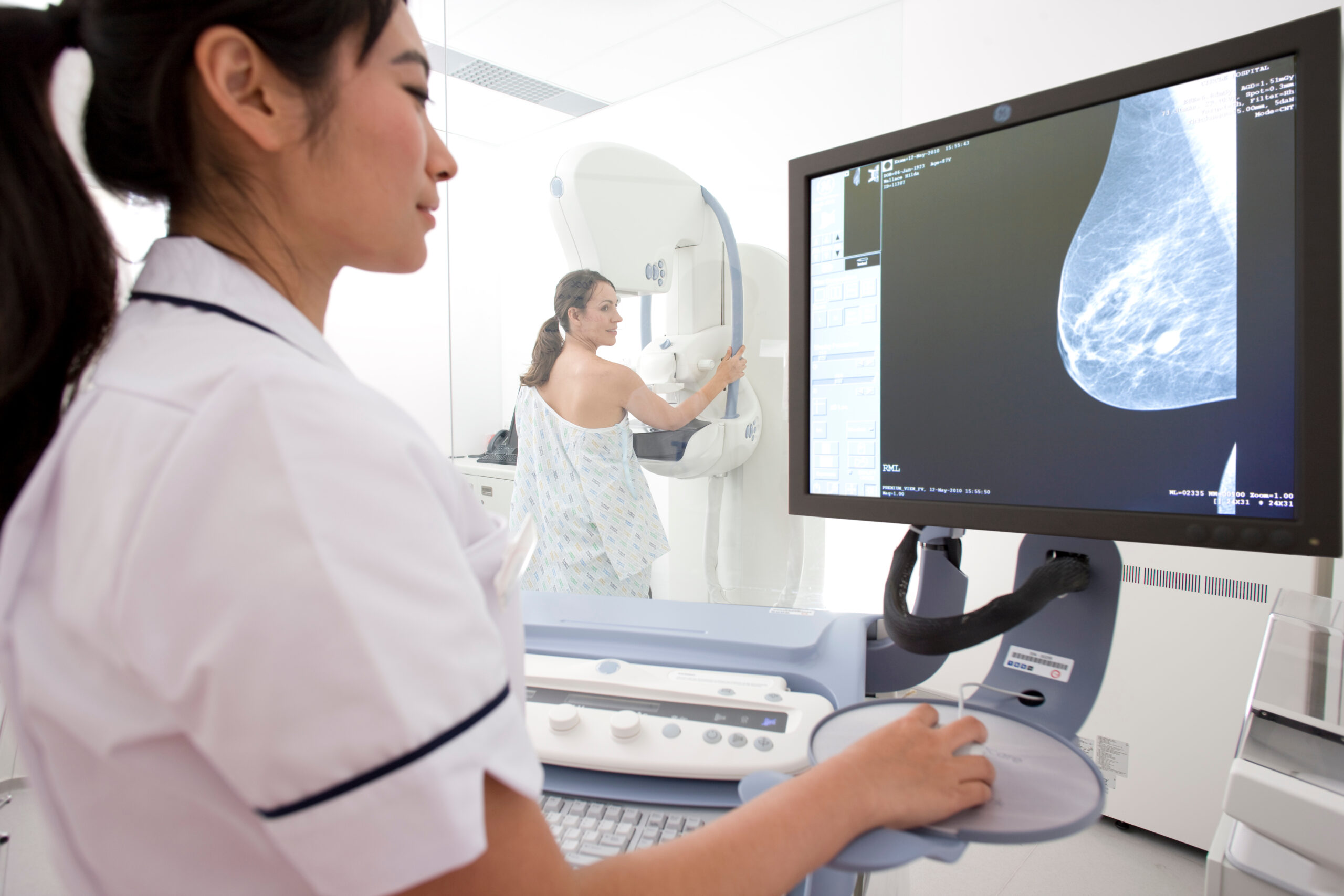If you’re planning to schedule your first mammogram, you might feel anxious or uncertain about what to expect. We understand that your first mammogram can feel like a daunting procedure, but our team of expert gynecologists at Carnegie Women’s Health is here to put your mind at ease.
What is a Mammogram?
A mammogram is an X-ray of your breasts used for breast cancer screening and/or diagnosis. Mammograms are life-saving because they can detect breast cancer or precancerous lumps years before symptoms develop. Mammograms are so important because cancer cells are caught so early that they are still contained inside of the ducts that run throughout the breast tissue. These X-ray examinations are recommended annually for women starting at the age of 40.
At our office, breast imaging may be ordered after your routine breast exam if a lump or bump is discovered. For most patients, these findings are not a cause for concern, but it is important to get a diagnosis as a precautionary measure.
Preparing for Your Appointment
The first step is scheduling an appointment. We recommend scheduling in advance and planning your appointment for a time when your breasts are not likely to be tender (right after your menstrual period). On the day of your appointment, do not wear deodorant or perfume. These items could leave a residue that is visible on the X-ray, resulting in unclear results. Some women may feel anxious about what their doctor may find during their screening, but this emotional cost of being nervous does not outweigh the cost of being healthy. Providers at Carnegie Women’s Health have had the pleasure of sharing benign results and good news with so many patients and point out that the emotional cost is never a reason not to screen.
The Day of Your Appointment
When you arrive for your mammogram, you will be asked to remove all clothing and jewelry from the waist up. A gown will be provided and then you will be taken to a room with a special X-ray machine. The X-ray is taken standing up and your doctor will show you where to stand. They will then place one of your breasts onto a platform and lower a plastic plate over the breast. This plastic plate will flatten the breast tissue, which might be a little uncomfortable, but should not be painful. The breasts need to be flattened to evenly spread out the tissue so that the X-ray can take a clear picture. Each breast only takes a few minutes to screen.
After Your Mammogram
Once your mammogram is complete, you can continue with your day as normal. A radiologist will review the scans and you should receive your results within a few days. If abnormal results are detected, additional tests such as an MRI or biopsy will be recommended for further diagnosis. A biopsy removes a small amount of breast tissue, which is then tested for the presence of cancerous cells. It’s important to know that abnormal results, or the presence of a potential mass, do not automatically mean you have breast cancer.
However, if cancerous cells are detected, your doctor will discuss treatment options and help you develop an effective treatment plan. Breast cancer is one of the most treatable types of cancer and many women have positive outcomes with early detection. At Carnegie Women’s Health, you can expect a comprehensive team-based approach to your care and we will work closely with your oncologist.
Schedule a Consultation
At Carnegie Women’s Health, we work closely with maternal-fetal health specialists and radiologists who provide safe and effective mammograms and breast cancer screening services. If you are considering whether to schedule a mammogram, we encourage you to contact our office today and schedule an appointment.

